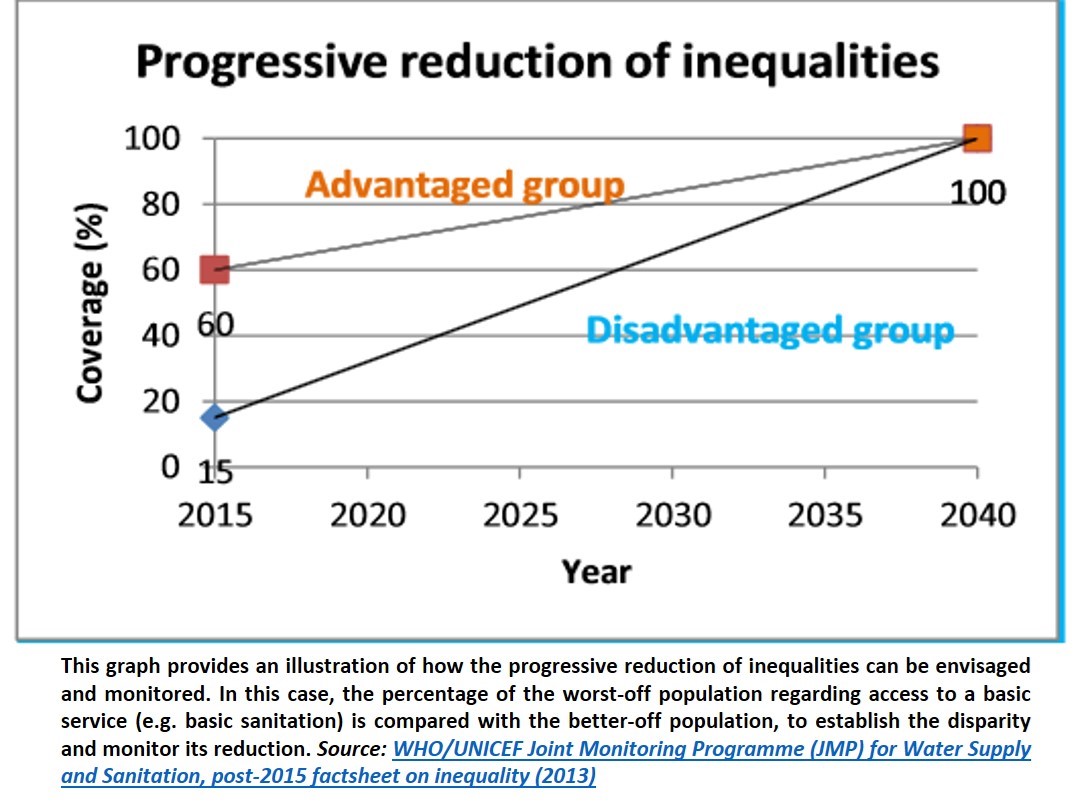October 2015 Discussion: Can the SDG Indicators be a Tool for Human Rights Accountability?
Welcome to our October monthly discussion! I’m Kate Donald from the Center for Economic and Social Rights (CESR), and I’ll be facilitating the discussion this month. As you may know, two weeks ago, on 25 September 2015 at United Nations headquarters in New York, heads of States adopted the 2030 Agenda for Sustainable Development amid much fanfare (and of course a visit from the Pope). Before implementation begins on 1 January 2016, the next major step is deciding on a set of indicators that will measure progress towards the Sustainable Development Goals (SDGs) and their targets.
This is a risky moment; many in the human rights movement and wider civil society fought long and hard to secure progressive and concrete commitments in the SDGs, but these important achievements could be undercut by flawed indicators. Ultimately, the progress governments are making towards the SDGs will be determined based on performance against the indicators, and therefore they are a crucial foundation of efforts to hold governments accountable for their commitments and, most importantly, for their human rights obligations. In this light, we believe that this could be a timely and relevant topic for this month’s online discussion, asking for views and feedback from other members of the Monitoring Working Group.
The SDGs could be an important vehicle for human rights realization. However, in order to bring this potential to fruition, we need to ensure that the indicators are also human rights-aligned and human rights-sensitive. Currently, a process is ongoing to develop a list of “global” indicators that are to underpin the SDG targets. (Some countries will also design their own complementary national indicators.) The current list of indicator proposals is made up of suggestions from UN entities and specialized agencies (including OHCHR, ILO, and the World Bank), which will be reviewed and finally decided by an expert group comprised of national statisticians. Although there are some innovative proposals, many of the “proposed priority indicators” are very problematic from a human rights point of view.
Then, what can we as human rights practitioners do to improve these indicators and get involved in effective SDG monitoring? Among other things, we may put our efforts together to:
- influence the indicator selection processes – at both global and national levels;
- engage with statisticians, particularly from National Statistical Offices, about the relevance of human rights and how to measure/assess human rights concerns; and
- develop our own indicators and monitoring strategies.
Here at CESR, we have been taking on the first challenge, responding to indicator proposals from statisticians and UN agencies and suggesting more human rights-friendly and policy-sensitive alternatives. CESR has just published a policy brief outlining a set of principles and proposals for the SDG indicators, with a focus on the human rights dimensions. I recall that in the Working Group’s monthly discussion on the development of gender equality indicators in September last year, several opportunities for advocacy were suggested. Can other members of the Working Group share their experiences and lessons learnt in their advocacy work in this regard?
The Millennium Development Goals (MDGs) were criticized by leaving inequalities untouched or even entrenching them, through a blunt focus on aggregate progress. In a big paradigm shift, now the SDGs include a number of important commitments on inequality (including stand-alone goals on gender equality and on reducing inequality within and among countries, and an overarching commitment to “leave no one behind” across all goals). Several SDGs focus on important economic and social rights areas such as poverty (Goal 1), food and nutrition (Goal 2), health (Goal 3), education (Goal 4), and water and sanitation (Goal 6). Most of these are not new to international development, and therefore are already captured to some extent in established socio-economic indicators. However, the way the SDG targets are conceptualized is more holistic and in many respects better aligned with human rights provisions than the MDGs, for example in their universality and emphasis on access and non-discrimination. Therefore, new indicators will be needed to bring them more closely in line with human rights principles and practice - including by incentivizing policy action and focusing attention on the people and communities who are most marginalized, deprived and discriminated against.

In our policy brief, we propose strategies to guide this process. Important elements of this include carefully tracking the progressive reduction of inequalities between groups over the years 2015-2030, especially in those goals related to economic and social rights, and ensuring the indicators focus squarely on the determinants of inequality, including fiscal policy and wealth concentration.
We would like to get a more concrete idea of how far other members of the Working Group think the SDGs will influence their work. In particular, we would like to discuss with Working Group members:
- What kind of indicators do you think will be useful to monitor progress towards the SDG targets, and how these indicators can be made human rights-sensitive?
- How can we leverage the SDG indicators, data and monitoring to seek improved human rights accountability?
- What are the pros and cons of human rights groups designing their own indicators?
- How do you plan to involve communities or other stakeholders in SDG monitoring; how far will the SDG indicators be legitimate in their eyes?
We look forward to hearing your perspectives on these questions or any other thoughts you have about the SDG indicators and other related areas for our sharing and collaboration.
